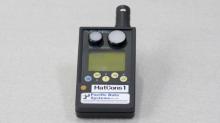Light Control
What you will need:

Transcript
Getting started
Today I am going to talk to you about how to monitor light levels and prevent light damage in your collection.
Light is a form of energy, which can trigger chemical changes in collection objects. You may already be familiar with the effects of light damage including fading, yellowing, splitting, and weakening of organic materials such as textiles, photographs and documents.
How light damage happens
As light damage happens slowly, it may not be noticed until serious damage has already occurred. This is dangerous as light damage is permanent. Conservators are often asked to restore faded signatures on cricket bats or photographs unfortunately this is usually impossible.
Light damage is a combination of the intensity of the light and the length of time the item is exposed to that light. So the same amount of damage will be produced by strong light in a shorter time as will be done by a weaker light in a longer time.
Measuring light levels
Light can be measured using a light meter. This environmental monitor can be used to measure visible light, UV radiation, temperature, and humidity in one unit. Other meters may only record visible light or UV levels.
It is possible to use a SLR camera to measure light levels. Instructions for this can be found on the Internet. Some smaller museums have also looked at smart phone apps to measure light levels. This is not currently recommended as the measurements are obtained in a very different way, and cannot be directly compared to those obtained with light meters.
To measure light, hold the light meter close to and at the same angle of the object. It is best to take several readings if the object is very large or unevenly illuminated.
If there is natural light in your display area, you will need to record the light levels at different times of the day and at different seasons. These should be taken from the same position and recorded on a plan.
Light levels should be taken every time a new exhibition is set up or any changes made that would affect the lighting, such as new window treatments or lighting systems.
Recommended light levels
Visible light levels are measured in lux. There is no ‘safe’ light level, below which damage will not occur, but 50 lux is recommended for the display of sensitive materials. This is the minimum level needed to see the shape and colour of an object adequately. This level is recommended for textiles, works on paper, dyed leather, feathers, natural history specimens, colour photos, and plastics.
250 lux is recommended for more robust items such as wood, bone, ivory, horn, furniture and un-dyed leather.
Inorganic materials such as ceramics, stone, metals, and glass are not sensitive to light. Although be aware that this may not be the case for any coatings, paints or other components.
For composite items made of more than one material, look at the most sensitive materials when assessing the recommended light level.
The most harmful form of light
All forms of light can cause damage, but UV radiation is the most harmful form of light as it contains the most energy.
UV light is not visible to the human eye and therefore removing it from museum lighting causes no change in appearance. UV light is measured in microwatts of ultraviolet radiation per lumen of visible light (µW/l). UV levels should be kept as low as possible – preferably below 30 µW/lm and at a maximum of 150 µW/lm
Handy hints
In storage areas:
- Objects should be stored in the dark. Consider blocking up any windows in your storeroom.
- Using boxes and covers will avoid even short-term light exposure.
- Where space allows, storerooms should not be used as permanent work areas.
- Remember to switch off the lights when leaving the store; it will save money and energy too.
In display areas:
- Avoid direct sunlight falling on collection objects. Windows should preferably be covered with well-fitted blinds or curtains. If it is not possible to eliminate natural light, it is recommended that UV filters be applied to the windows.
- Display the most sensitive items the furthest away from strong light sources such as windows.
- Sensitive materials should not be on permanent display. Try to keep their display period below 6 months.
- Display copies of important photos and documents rather than the originals.
- If books are displayed open, the pages shown should be regularly rotated.
- Painting walls with white paints containing zinc or titanium dioxide can help reduce UV light levels
- Keep lights at a distance from objects. Many lighting systems also produce heat and these should not be placed inside showcases.
- Fluorescent and halogen lights transmit UV light. Low UV emitting fluorescent lights are available, or tubes can be easily covered with UV filtering film or covers.
- LED lighting is more economical and emits low levels of UV as well as being cooler and suitable for showcase use.
- Automatic light switching in rooms or display cases can help reduce light levels.
- A lower cost solution is to use removable covers on display cases containing sensitive materials.
Remembering and following these points will help preserve items from light damage.
Thanks for listening.












